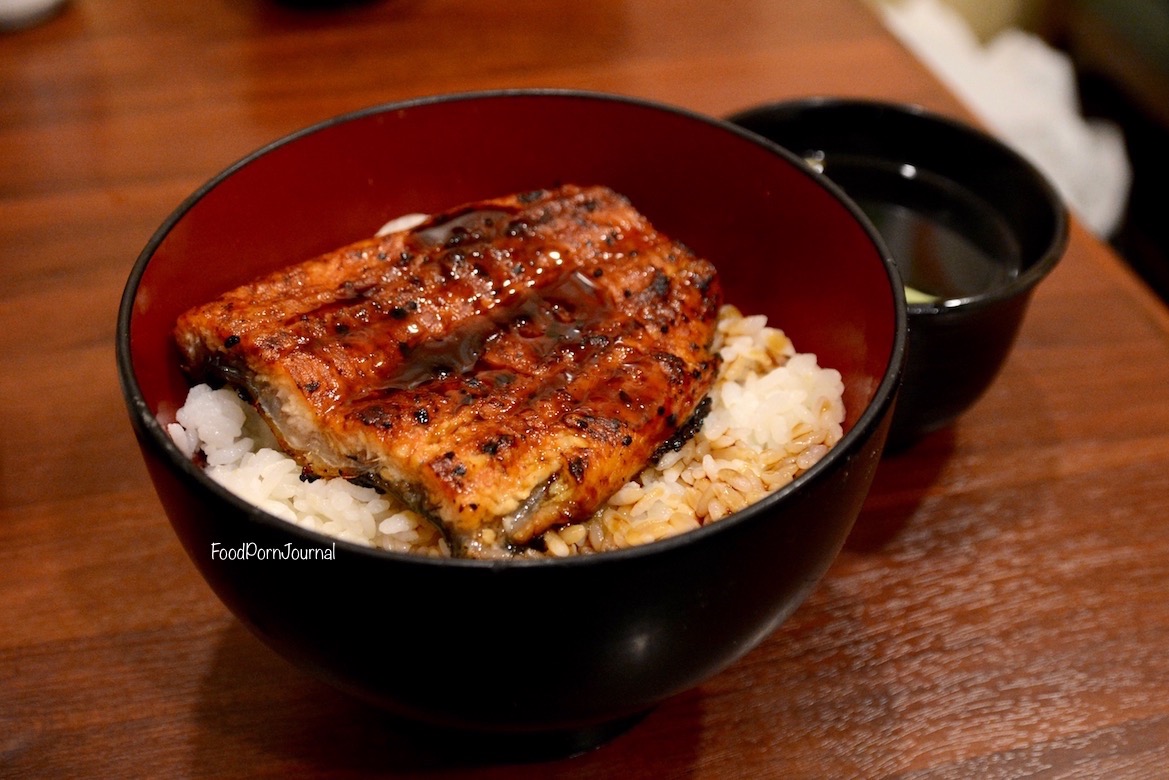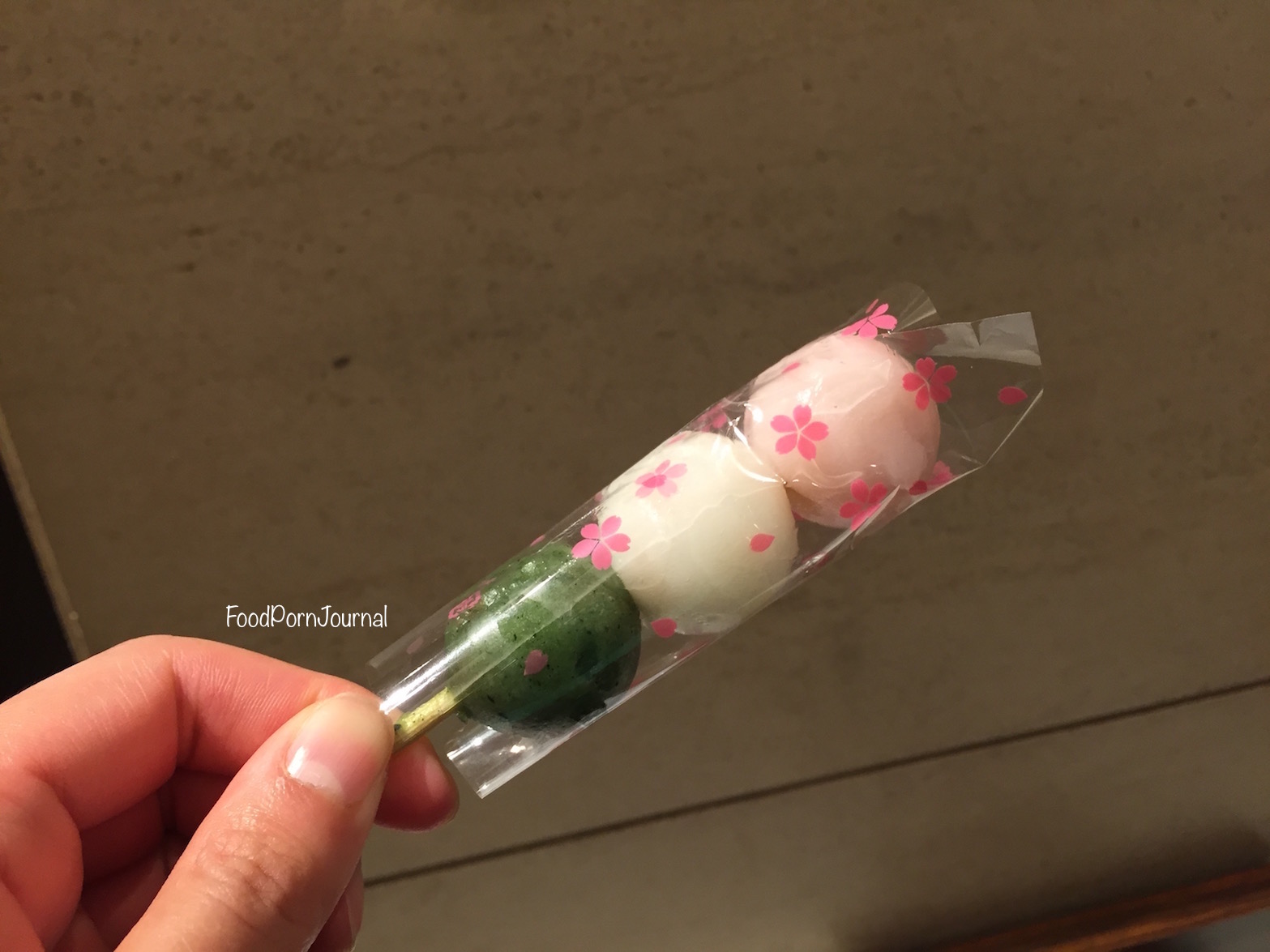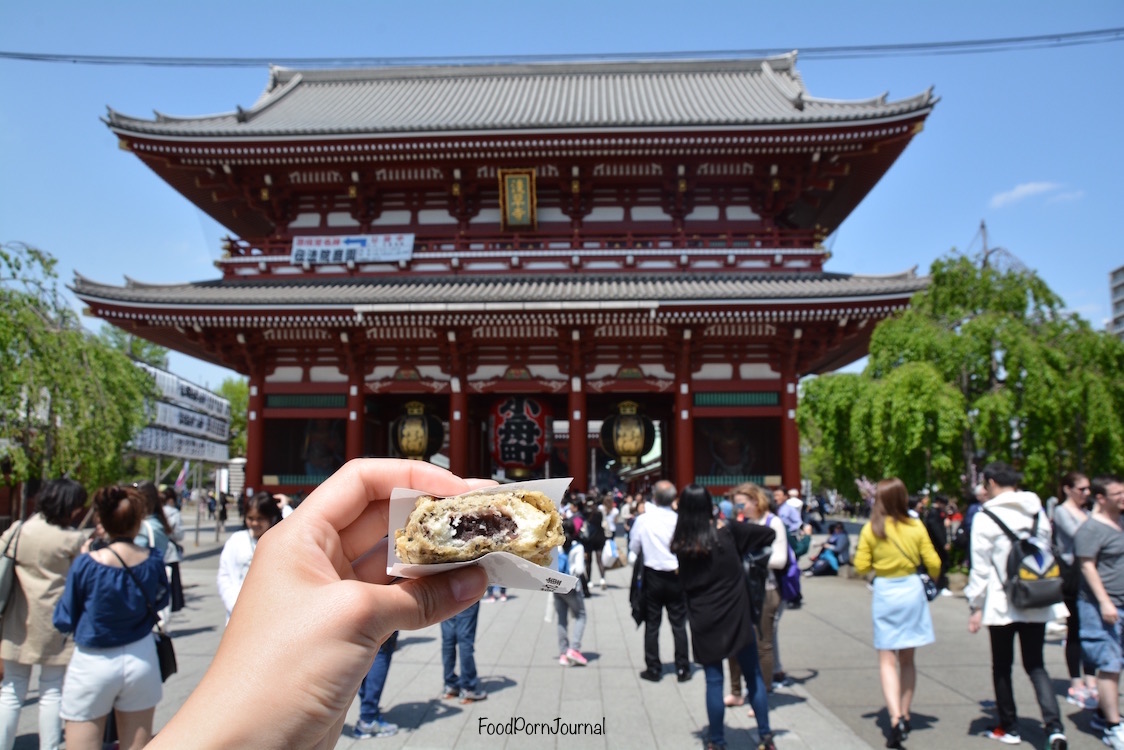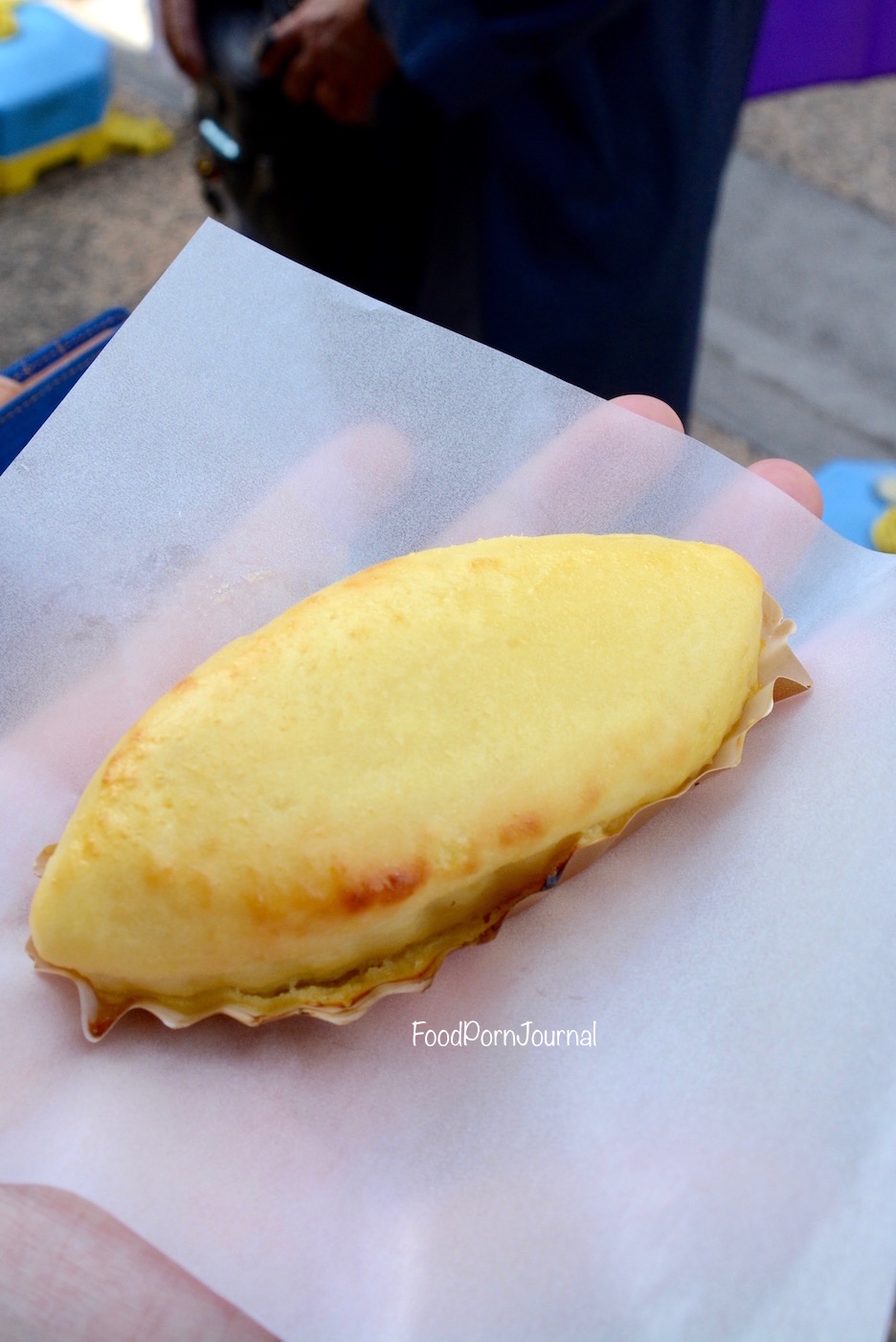Continuing on from Eating in Tokyo – Part 2 – Shibuya and Harajuku…
Ameyoko Markets
We headed to the Ameyayokocho Markets in Ueno, or Ameyoko for short. Located opposite the train station, these markets were bustling with souvenir shops, clothes, and food.

Our first stop was at Gindaco, a takoyaki AND taiyaki chain store in Japan.

I was mainly attracted to the new hybrid croissant taiyaki which I had read about on other food blogs. At Gindaco, these came in three different fillings – strawberry custard, regular custard, and red bean paste.

I tried the strawberry custard (¥250) and was slightly disappointed that it wasn’t warm. Nevertheless, the croissant pastry was a wonderful texture of flakey pastry and crispy to bite into. The strawberry custard was sweet, thick and tasted very much like strawberry though I don’t know how artificial it would have been. My sister tried the regular custard which she claimed was still hot, so I must have gotten one of the taiyakis that had been made earlier and had gone cold.

We also decided to try out Gindaco’s takoyaki which they were making fresh. We watched as the chef placed a bit of octopus into each ball of hot dough. There were different toppings you could choose from for the takoyaki. My sister picked the shrimp with mayonnaise. We had to wait a little while for it to cool down. The takoyaki were steaming hot and gooey inside. Nothing beats piping hot takoyaki fresh off the grill.
There were different toppings you could choose from for the takoyaki. My sister picked the shrimp with mayonnaise. We had to wait a little while for it to cool down. The takoyaki were steaming hot and gooey inside. Nothing beats piping hot takoyaki fresh off the grill.

Gindaco also sold various dessert popsicles in different flavours. There are so many food displays made out of plastic outside the eateries in Japan. It’s great being able to just point to a dish you want especially if you can’t speak the language!

As it was cherry blossom season, there were also plenty of cherry blossom flavoured sweets for sale at various market stalls.

During another trip to the markets, we decided to try some unagi (eel) for lunch. There were several small eateries around the markets that specialised in unagi. After passing by a few, we decided to be spontaneous and just go into one. We chose Unatoto as it had reasonable prices and an English menu!

Both my sister and I tried the unadon (¥500 or AUD$6) which came with two small pieces of unagi on rice. I added on the kimosui, unagi liver soup, for an extra ¥150. The menu clearly stated ‘it doesn’t taste like liver’ so I thought I would give it a try. It really didn’t taste like liver or anything offal-like, more of a light clear broth with a hint of something strange. The unagi was mouthwatering and wonderfully tender. I tasted a few tiny bones but they were soft and small enough to chew through. The unagi are grilled over high grade charcoal and basted in a soy sauce mixture with sugar and vinegar. I absolutely loved the sticky charcoal soy coating and wished I could bottle it up. Very glad we decided to try it!

Most Japanese restaurants have a side of pickles on the table to add to your dish. I don’t know what was served at Unatoto, but these were very mildly pickled and tasted fantastic with my unadon.

We came back to the Ameyoko markets towards the end of our trip just to stock up on Kit Kats (and because it was a more convenient time to add weight to our suitcases). There are so many different flavours of Kit Kats in Japan – strawberry cheesecake, wasabi, sake, roasted tea, matcha, sakura matcha and so much more. Through my travels to other parts of Japan, I found Kit Kats made specifically from the regions such as Shinshu Apple from the Shinshu region, and Hokkaido Red Bean from Hokkaido. I also came across citrus Kit Kats on the island of Miyajima and never saw it again anywhere else.

Depachika
Another great food option to check out in Tokyo are all of the basement food halls, aka depachika. The majority of the multi-storey shopping centres have a food hall at the basement levels. I’m not talking food court food. These basements are filled with some of the best foods across every region in Japan. Everything is packaged so carefully and perfectly.

I immediately headed to the cakes and desserts section. Not only is there local food, but there are international heavyweights such as Henri Charpentier and Pierre Marcolini.

Apart from dessert, there’s everything from takoyaki and bento boxes to freshly baked breads and tea leaves. The basement food halls do not have seating areas except if you dine in at one of the fancier eateries. It is very much a take away kind of place.

I must admit that I didn’t buy much at the depachikas. We roamed around in several, though this was purely by accident as most basement food halls were linked to the underground train stations, some of which were a nightmare to get out of hence we landed in the depachikas. One of the things I did purchase was dango! A popular snack of sweet flavoured glutinous rice balls on a stick (about ¥100). This can be found all over Japan – both sweet and savoury types.

After a full day of walking and sightseeing, my sister and I really just wanted to sit somewhere so we didn’t fully take advantage of all the depachikas. Next time, when we’re not crazily trying to get to the next sightseeing spot, I’ll slow down and take advantage of all of the food options.
Nakamise Shopping Street (Nakamise Dori)
I’m so glad we decided to visit Sensoji Temple in Asakusa. Only when we looked up how to get there did we find out that there was a 250m shopping street, Nakamise Dori, leading up to the temple. This was one of my favourite market streets! There was so much food to try and souvenirs to buy. Obviously the further away from the entrance of the street we walked (and closer towards the temple), the cheaper the souvenirs became.

One of the first snacks I tried was freshly made age-manju, small steamed cakes coated in tempura batter and deep fried. These came in various flavours – cherry, custard, pumpkin, sweet potato, green tea, sesame, monja (pork) and a ‘standard’ flavour probably consisting of some sort of bean paste.

I chose the black sesame (¥140) which still tasted a lot more like a sweet red bean paste however the batter was dotted with sesame seeds. The outer layer was fried and crunchy, yet the inner layer was soft and chewy. A nice hit of sugar.

I couldn’t resist fresh sakura (cherry blossom) mochi from one of the stalls at ¥108 each. These were soft and so delicious!

We also passed a stall selling various types of senbei (Japanese rice crackers).

After walking up the whole shopping street, we veered off to one of the side streets when I came across the Mochi Dog stall. It had my name written all over it.

The mochi dog is basically a Vienna sausage wrapped in mochi (a glutinous rice cake) with cheese and chilli sauce on top (¥300). It was a weird combination of sweet and savoury. I didn’t like the chilli and cheese topping, but I didn’t mind the sausage and mochi combination together.

A few stalls over from the Mochi Dog stall, there was an ice cream stall selling wasabi ice cream. I had to do it while in Japan. It tasted exactly like wasabi would taste like in an ice cream. There was no further sweetening of wasabi. It was just wasabi in cream form. I tried it but it’s not something I could ever eat again!

My sister spotted a stall selling everything sweet potato including this sweet potato tart. It tasted nothing like sweet potato or any potato. An American tourist next to us summed it up perfectly – it tasted like hot cake batter. It was sickeningly sweet, so warm and gooey!

I walked past what looked like a confectionery shop selling these small glossy balls. There were no English signs so I had no idea what would be inside. I assumed it was a type of mochi. When I went to purchase the small 9-pack of balls (¥778), the man at the counter told me I had to eat it all today. It was that fresh.

I cracked it open that afternoon back at the hotel. Each ball was filled with a different flavoured filling which were made out of a bean paste and covered in a jelly-like glaze. I quite liked the coffee flavoured bean paste as it was unusual and different to the traditional red bean paste. A nice little afternoon snack that was great paired with green tea.

The Nakamise Shopping Street was a fantastic find and I would highly recommend it for both snacking and souvenir shopping.
I’m writing up Eating in Tokyo Part 4 – Shinjuku and Ginza next…
If you want more random photos and updates about food, I’m on Facebook, Twitter and Instagram
Facebook: /foodpornjournal
Twitter: @foodpornjournal
Instagram: /foodpornjournal
